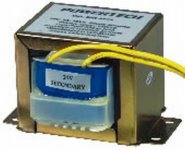Accuphase E-202 Integrated Power Amplifier Repaired and Rsstored Bolles - YouTube
Have a glance at this fanatic's amplifier for an idea of the amplifiers age - looks a bit too wild for double insulation to me.
I don't think a product this old will have a clear status as class 1 or 2. I don't even know when these classifications were introduced and regulations implemented but I recall them being applied to some Japanese audio products around 1980. Safety with international models was probably defined at the importer's workshop as much as in the factory before that - If the goods arrived as an import in the commercial sense.
Have a glance at this fanatic's amplifier for an idea of the amplifiers age - looks a bit too wild for double insulation to me.

I don't think a product this old will have a clear status as class 1 or 2. I don't even know when these classifications were introduced and regulations implemented but I recall them being applied to some Japanese audio products around 1980. Safety with international models was probably defined at the importer's workshop as much as in the factory before that - If the goods arrived as an import in the commercial sense.
BTW, the E-202 has a interesting feature where the load impedance is 'tested' before operating the output relays.
If the load impedance is too low/shorted, the relays are inhibited from operating.
I have not seen any other amp that does this.
Dan.
If the load impedance is too low/shorted, the relays are inhibited from operating.
I have not seen any other amp that does this.
Dan.
Apparently the symbol in post 35 means,
The T symbol means the unit was in compliance with Japanese regulations at the time.
It looks like I'm not going to find out whether this was an import or not, so what's the general consensus here? Leave as is? Or add a safety ground? How does this stack up legally?
The T symbol means the unit was in compliance with Japanese regulations at the time.
It looks like I'm not going to find out whether this was an import or not, so what's the general consensus here? Leave as is? Or add a safety ground? How does this stack up legally?
Legally, I expect that you should leave as is.Apparently the symbol in post 35 means,
The T symbol means the unit was in compliance with Japanese regulations at the time.
It looks like I'm not going to find out whether this was an import or not, so what's the general consensus here? Leave as is? Or add a safety ground? How does this stack up legally?
Dan.
As it's fitted with a voltage selector and complied with Japanese standards, I assume this is rated for safe operation at the highest supply voltage. If there is no UK electrical safety compliance sticker, it met only Japanese standards at the time of manufacture. I suggest that it was simply an unearthed 2-wire AC appliance, as depicted in the service manual. It may be frowned upon now but was normal practice in most countries at the time.
Yep, leave it as is - It's not double insulated but probably no less safe than originally approved for the Japanese market, provided the mains flex is properly secured and the leads unstressed and well insulated. Any chassis earth connection to the signal earth (RCA sockets) or turntable earth will determine the chassis potential, provided the wiring current capacity isn't exceeded in a fault condition. Don't be surprised that other examples, as in that video , have been heavily modified and the internal grounding - perhaps safety earthing too, altered.
We can't judge safety for you here, even with pics or accurate descriptions over the net, so bear in mind that a forum can only suggest, not pronounce one way or the other unless something is very obviously wrong.
Yep, leave it as is - It's not double insulated but probably no less safe than originally approved for the Japanese market, provided the mains flex is properly secured and the leads unstressed and well insulated. Any chassis earth connection to the signal earth (RCA sockets) or turntable earth will determine the chassis potential, provided the wiring current capacity isn't exceeded in a fault condition. Don't be surprised that other examples, as in that video , have been heavily modified and the internal grounding - perhaps safety earthing too, altered.

We can't judge safety for you here, even with pics or accurate descriptions over the net, so bear in mind that a forum can only suggest, not pronounce one way or the other unless something is very obviously wrong.

This is a double insulated transformer as used in tons of electronic devices.....ie the primary is well insulated from both the secondary and the magnetic core by the compartmented sections.
I assume that the Accuphase transformer meets these requirements.
Open the Accuphase transformer and show us some pics.
Dan.
Last edited:
- Status
- Not open for further replies.
- Home
- Amplifiers
- Solid State
- Twisting transformer secondary's